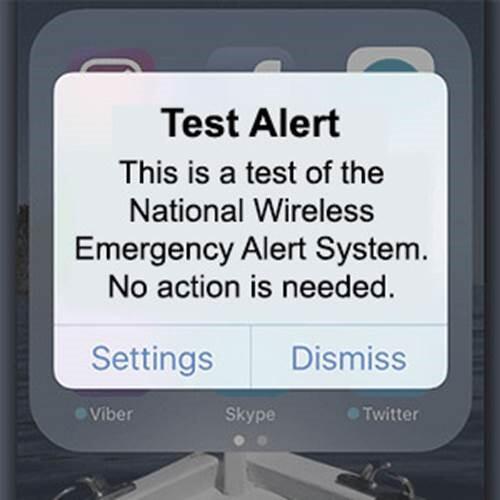FEMA and FCC plan Nationwide Emergency Alert Test for October


By: Stacy M. Brown / NNPA
Prepare for simultaneous text messages and alerts as FEMA conducts a countrywide test of the Emergency Alert System (EAS) and Wireless Emergency Alerts (WEA) this fall in collaboration with the Federal Communications Commission (FCC). Authorities have planned to divide the national test into two parts, assessing WEA and EAS skills. Both tests are scheduled to begin at 2:20 p.m. ET on Wednesday, Oct. 4.
The WEA portion of the test will go out to all consumer cell phones. According to a news release, this will be the third nationwide test but the second test for all cellular devices. The test message will display in either English or Spanish, depending on the language settings of the wireless handset. Officials noted they would target radios and televisions for the EAS portion, marking the seventh nationwide EAS test.
FEMA and the FCC are working with EAS participants, wireless providers, emergency managers, and other stakeholders to prepare for this national test. Agency officials said FEMA want to reduce confusion and maximize the value of the test for public safety. They noted that the Oct. 4 test ensures that the systems still effectively warn the public about emergencies, especially national ones.
If the test is postponed due to widespread severe weather or other significant events, the backup testing date is Oct. 11. Additionally, the WEA portion of the test would be initiated using FEMA’s Integrated Public Alert and Warning System (IPAWS), a centralized internet-based system administered by FEMA that enables authorities to send authenticated emergency messages to the public through multiple communications networks. The WEA test will be administered via a code sent to cell phones.
This year, the EAS message will be disseminated as a Common Alerting Protocol (CAP) via the Integrated Public Alert and Warning System-Open Platform for Emergency Networks (IPAWS-OPEN). All wireless phones should receive the message only once. FEMA says consumers nationwide can expect the following from the WEA test:
At approximately 2:20 p.m. ET, cell towers will broadcast the test for about 30 minutes. During this time, WEA-compatible wireless phones that are switched on, within range of an active cell tower, and whose wireless provider participates in WEA should be capable of receiving the test message.
For consumers, the message on their phones will read: “THIS IS A TEST of the National Wireless Emergency Alert System. No action is needed.” Phones with the main menu set to Spanish will display: “ESTA ES UNA PRUEBA del Sistema Nacional de Alerta de Emergencia. No se necesita acción.”
WEA alerts are created and sent by authorized federal, state, local, tribal, and territorial government agencies through IPAWS to participating wireless providers, which deliver the alerts to compatible handsets in geo-targeted areas. FEMA said a unique tone and vibration would accompany the warnings to ensure the alerts are accessible to all, including people with disabilities.
Officials expect the EAS portion of the test to last approximately one minute. The test will get underway with the participation of radio and television broadcasters, cable systems, satellite radio and television providers, and wireline video providers. The test message will be similar to the regular monthly EAS test messages familiar to the public. It will state: “This is a nationwide test of the Emergency Alert System, issued by the Federal Emergency Management Agency, covering the United States from 14:20 to 14:50 hours ET. This is only a test. No action is required by the public.”
